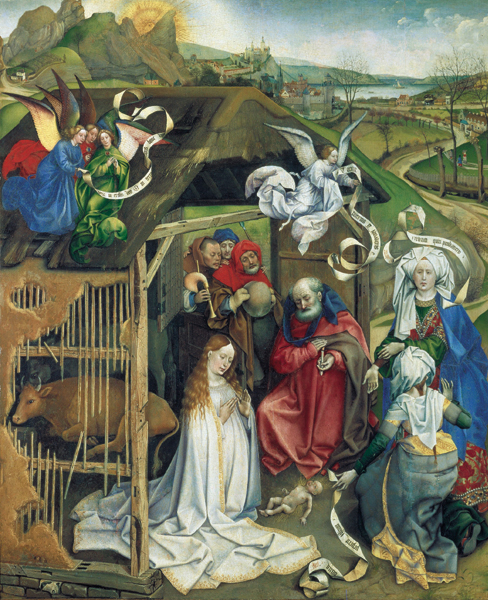Image Details

Musée des Beaux-Arts, Dijon/Erich Lessing
Turbaned midwives attend the infant Jesus in this oil painting of “The Nativity” (c. 1425) attributed to the Netherlandish artist Robert Campin. According to the Proto-Gospel of James, an early—but noncanonical—Christian text, Joseph summoned the women to assist at Jesus’ birth. One midwife, named Salome, questioned Mary’s virginity, the gospel continues. She swore, “Unless I put (forward) my finger and test her condition, I will not believe that a virgin has brought forth.” Fire consumed the incredulous midwife’s hand as she tested Mary until an angel instructed her to touch Jesus to be cured. In Campin’s painting, Salome displays her healed hand.
Written in the late second century C.E., the Proto-Gospel of James is one of the earliest and originally most popular texts of the Christian Apocrypha. Excluded from the New Testament, the texts are rarely read today, especially in the Protestant tradition in the United States. But Christian art attests to the currency these stories have held within the church since its inception.
